





Published on Apr 02, 2024
A prism is a transparent optical element with flat, polished surfaces that refract light. Prisms can be made from any material that is transparent including glass, plastic and fluorite.
A prism can be used to break light up into its constituent spectral colors. Prisms can also be used to reflect light, or to split light into components with different polarizations.
To find refractive index of different liquids using hollow prism.
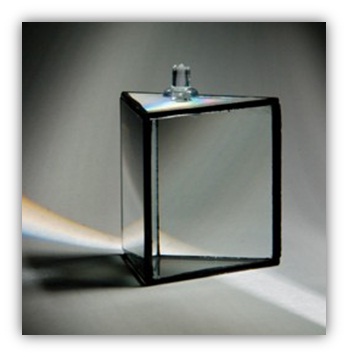
The refractive index of the liquid is given by the formula:
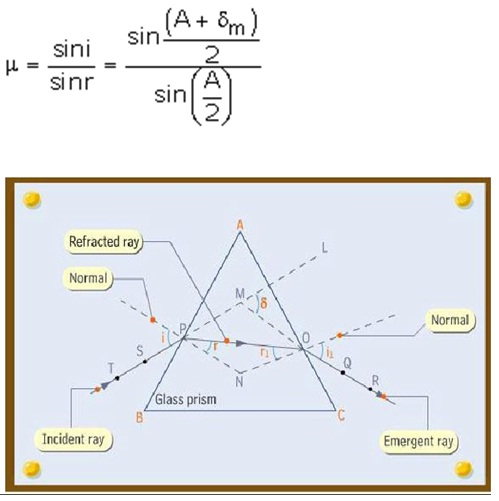
Where:
μ = refractive index of the liquid
δm = the angle of minimum deviation
r = angle of refraction
i = angle of incidence
A = angle of prism
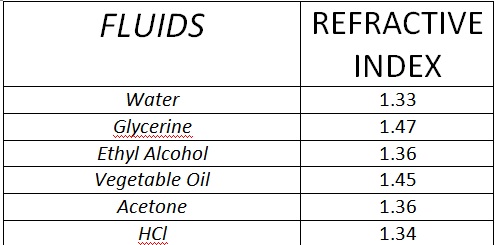
• Hollow glass prism
• Various liquids like water, carbon disulphide, benzaldehyde etc.
• Bell pins
• Drawing board
• Fix a white sheet of paper on the drawing board with help of drawing pins.
• Keep the prism and mark the outline of it as ABC.
• Drop a normal PQ on the side AB.
• Draw the angle of incidence in accordance with the normal PQ and place 2 pins so that they appear to be in the straight line.
• Place the prism filled with given sample of liquid ,on the marked outline ABC.
• Now take the pins and place them on the side AC so that all the 4 pins appears to be in same line.
• Remove the prism and draw the line joining the points so obtained.
• Mark the diagram as shown in the figure.
• Repeat this with different liquids and different angle of incidence
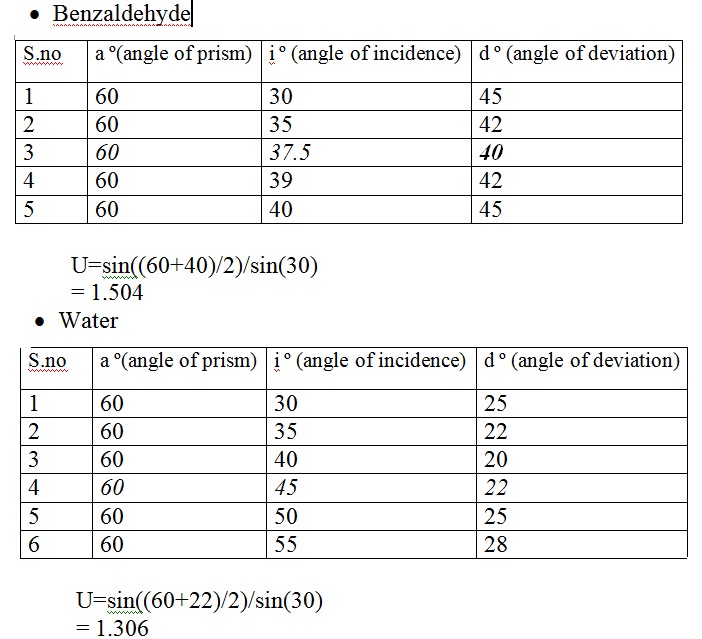
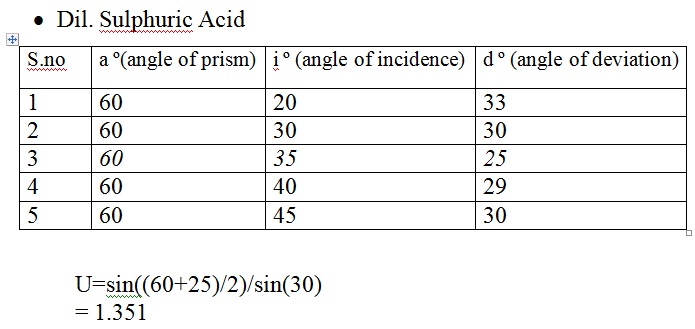
Refractive indices at room temperature:
o Actual: 1.546
o Experimental: 1.504
o Actual: 1.33
o Experimental: 1.306
o Actual: 1.355
o Experimental: 1.351
• Angle of incidence should lie b/w 35-60 degree.
• Pins should be vertically fixed and should lie in same line.
• Distance b/w two points should not be less than 10mm.
• Same angle of prism should be used for all observation.
• Arrow head should be marked to represent emergent and incident ray.
• wikipedia.org
• google.com
• physicsforlife.com{physicsforlife.com}
• earthphysics.com